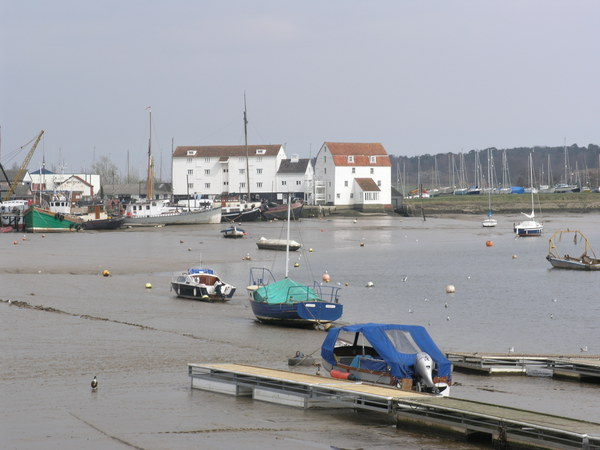Sandlings Walk
Map of the trail
|
Maps courtesy of Google Maps. Route for indicative purposes only, and may have been plotted after the walk. Please send me have comments you may have on what you think of this new format. |
List of legs
| Leg | Distance (miles) | Ascent (feet) | Descent (feet) | Difficulty |
|---|---|---|---|---|
| Broke Hall to Woodbridge | 9.7 | 220 | 305 | easy |
| Woodbridge to Tangham | 9.2 | 249 | 190 | easy |
| Tangham to Snape Maltings | 12.2 | 262 | 322 | easy |
| Snape Maltings to Sizewell | 9.3 | 282 | 272 | easy |
| Sizewell to Dunwich | 8.7 | 295 | 272 | easy |
| Dunwich to Southwold | 9.2 | 213 | 246 | easy |
| 58.3 | 1521 | 1607 |
Further information (books)
Sadly I know of no books describing the Sandlings Walk. If you know of any, please let me know.
However, there are a number of books detailing circular walks based on the trail:
Further information (websites)
The following websites detail the trail:- The official website for the trail, with maps and information available for download. - www.suffolkcoastandheaths.org
- The Wikipedia page about the trail. - en.wikipedia.org
- A great personal account of the trail, with many photographs. - www.annierak.hoofbags.me.uk
Transport
The nearest railway station to the main western trailhead on Bucklesham Road in Ipswich is Derby Road (Ipswich) station, which is about a mile away. The actual start point has abus stop called "St Augustines (Ipswich), adj Community Centre (On Bucklesham Road)", and is well served by bus services from Ipswich, run by Ipswich Buses.
Southwold is not served by a railway line; the nearest stations are Halesworth to the west and Lowestoft to the north. However the town is well served by bus services that run to Lowestoft and Halesworth.
Transport Direct is a very good resource for planning journeys by public transport. However bus services in the area have dramatically reduced in the last few years.
Trail news
The latest information on the Sandlings Walk, including path blockages and events, can be found on the Suffolk Coasts and Heaths website.
Map information
1:25,000 maps
| | | | |||
| Explorer 197 (Ipswich, Felixstowe & Harwich) | Explorer 212 (Woodbridge & Saxmundham) | Explorer 231 (Southwold & Bungay) |
1:50,000 maps
| | | ||
| Landranger 169 (Ipswich & The Naze, Clacton-on-sea) | Landranger 156 (Saxmundham, Aldeburgh & Southwold) |
Suggested schedules
The following schedules are advisory. They indicate various ways that the trail can be split up into walks of several lengths, with convenient end-points for each day's walk.
Naturally, you may want to alter this according to whether you are staying in B&B's, hostels, camping or are doing the walk in sections and are relying on public transport. Your own walk will probably vary from the itineraries shown below.
| Night | Leisurely | Fast | |||||
|---|---|---|---|---|---|---|---|
| Place | Distance (m) | Place | Distance (m) | ||||
| 0 | Broke Hall | Broke Hall | |||||
| 1 | Woodbridge | 9.7 | Tangham | 18.9 | |||
| 2 | Tangham | 9.2 | Sizewell | 21.5 | |||
| 3 | Snape Maltings | 12.2 | Southwold | 17.9 | |||
| 4 | Sizewell | 9.3 | |||||
| 5 | Dunwich | 8.7 | |||||
| 6 | Southwold | 9.2 | |||||
The Sandlings Walk is easy going with few gradients to challenge the walker, meaning that it is easy to do long distances each day if you so desire. Additionally, the going underfoot is often soft, again making it easy to walk long distances. However it is a walk that deserves to be taken slowly, with a great deal to be seen just off the trail.
The biggest problem with splitting the walk up is transport back each day; public transport is detailed on each leg's description.
Tourist Information
For information about accommodation and things to do in the Ipswich area, see the visit-ipswich website.
Southwold has a tourist information office that is open between Easter and the autumn - see the Visit East of England website for more information.
When to walk
The Sandlings Walk can easily be walked at any time of the year. Many of the paths and tracks it uses are sandy, meaning that the ground is generally well-drained; additionally it passes through one of the driest parts of the country.
Some of the paths get busy during the summer, especially during the weekends, and accommodation may prove hard to find along the coastal stretches of the trail during the summer holidays.
The budding trees and flowering plants can make a springtime walk rewarding; additionally a summer or autumn walk are enhanced by brilliant expanses of flowering heather.
